 To enhance service speed and avoid tariff delays, we've opened a US warehouse. All US orders ship directly from our US facility.
To enhance service speed and avoid tariff delays, we've opened a US warehouse. All US orders ship directly from our US facility.
| Cat. No. | Product Name | Field of Application | Chemical Structure |
|---|---|---|---|
| DC60403 | Bacteriopheophytin Featured |
Bacteriopheophytin, also known as Bacteriopheophytin a, is a Pigment which is the degradation product of bacteriochlorophyll.
More description
|
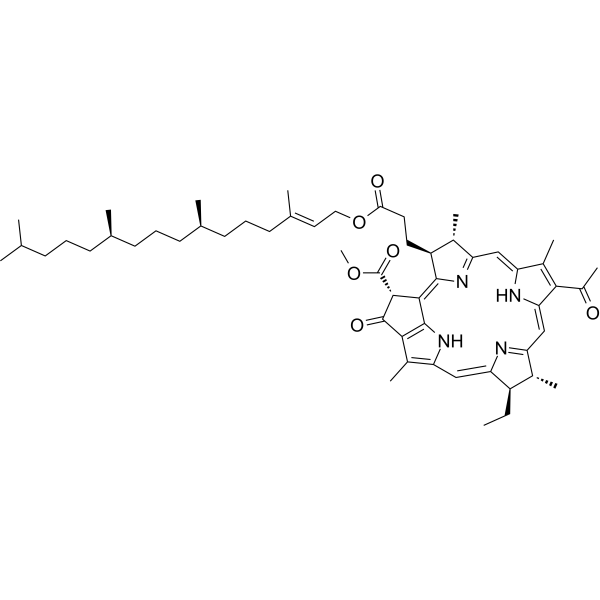
|
| DC23219 | Zotarolimus Featured |
Zotarolimus (ABT-578, A 179578) is a semi-synthetic analogue of rapamycin, inhibits FKBP-12 binding with IC50 of 2.8 nM and shows less potent systemic immunosuppression than rapamycin.
More description
|
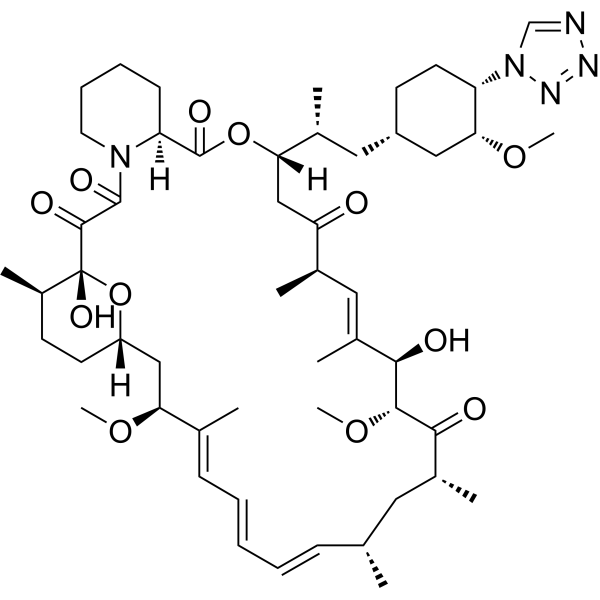
|
| DC36281 | Pristinamycin IA Featured |
Pristinamycin IA (Mikamycin B) is a cycle-peptidic macrolactone antibiotic. Pristinamycin IA is a substrate of P-glycoprotein and inhibits its function. Pristinamycin IA is active against StaphyloEoccus and Srreptococcus.
More description
|
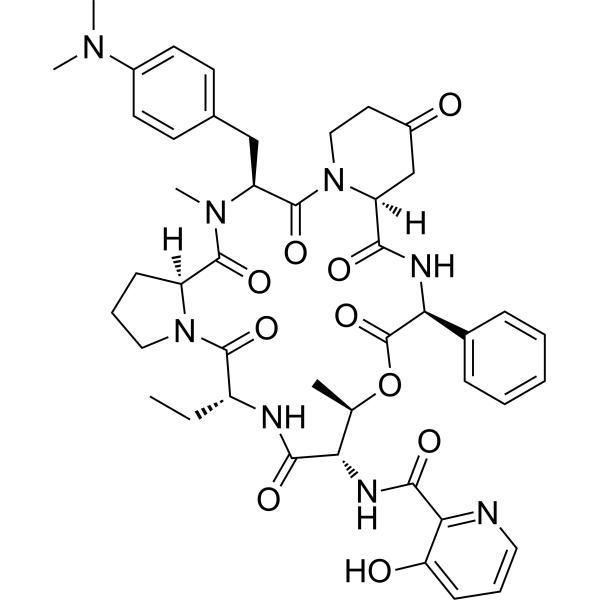
|
| DC67199 | Virginiamycin M1 Featured |
Virginiamycin M1 (Pristinamycin IIA; Ostreogrycin A), produced by Streptomyces virginiae, is an polyunsaturated macrocyclic lactone antibiotic and acts as a component of Virginiamycin (HY-112665). Virginiamycin M1 alone is against Staphylococcus aureus with a MIC of 0.25 μg/mL.
More description
|
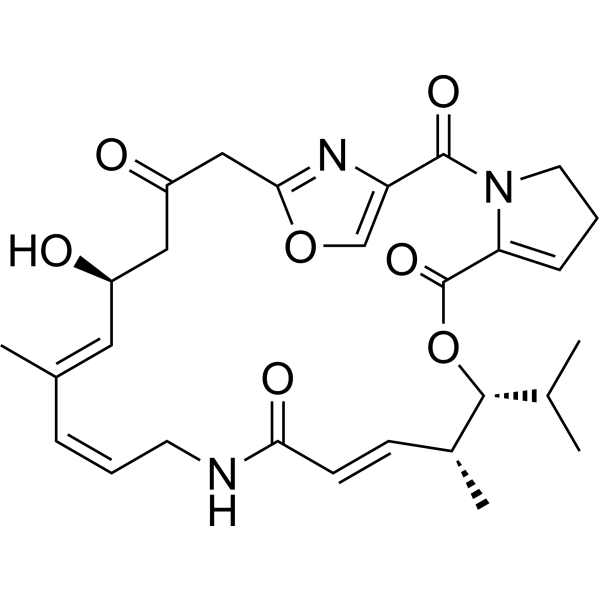
|
| DC41098 | Bleomycin hydrochloride Featured |
Bleomycin hydrochloride is a DNA synthesis inhibitor. Bleomycin hydrochloride is a DNA damaging agent. Bleomycin hydrochloride is an antitumor antibiotic.
More description
|

|
| DC31272 | HPPH Featured |
Photochlor, also known as HTTP, is a lipophilic, second-generation, chlorin-based photosensitizer. Upon intravenous administration, HPPH selectively accumulates in the cytoplasm of cancer or pre-cancerous cells. When laser light is applied, a photodynamic reaction between HPPH and oxygen occurs, resulting in the production of cytotoxic free radicals and singlet oxygen and free radical-mediated cell death. Compared to the first-generation photosensitizer porfimer sodium, HPPH shows improved pharmacokinetic properties and causes only mild skin photosensitivity which declines rapidly within a few days after administration.
More description
|

|
| DC8853 | Tildipirosin Featured |
Tildipirosin is a 16-membered macrolide used as an antibiotic in veterinary medicine. Like other macrolides, it inhibits protein synthesis in bacteria and blocks the production of biofilms.
More description
|
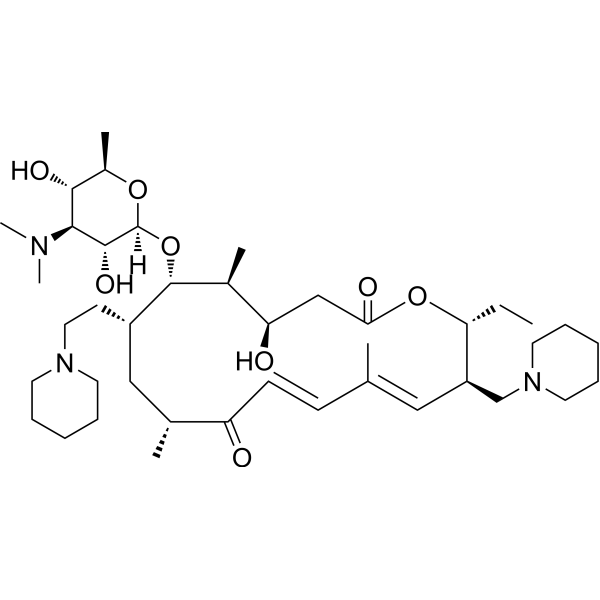
|
| DCY-048 | Topotecan hydrochloride Featured |
Topotecan Hydrochloride (SKF 104864A Hydrochloride) is a Topoisomerase I inhibitor with potent antineoplastic activities.
More description
|

|
| DC8115 | Vancomycin hydrochloride Featured |
Vancomycin hydrochloride in stock,price: 500 USD/100mg. 0
More description
|

|
| DCAPI1447 | Pneumocandin B0 Featured |
Pneumocandin B0 is the major analogue of a family of lipopeptides isolated from several species of several different genera, notably Cryptosporiopsis, Glarea and Pezicula. Pneumocandin B0 is a potent antifungal and acts by inhibition of the synthesis of β
More description
|

|
| DC10301 | Emodepside Featured |
Emodepside (PF 1022-221) is a cyclooctadepsipeptide with broad-spectrum anthelmintic activity.
More description
|

|
| DC1050 | Daptomycin Featured |
Daptomycin is a lipopeptide antibiotic with rapid in vitro bactericidal activity against gram-positive organisms.
More description
|
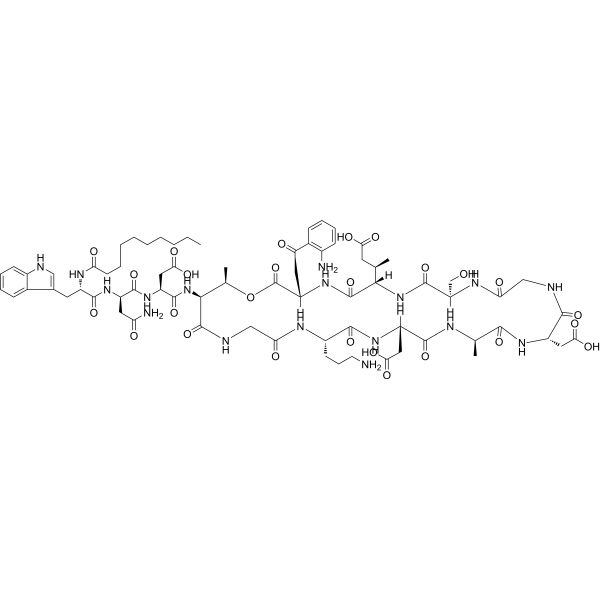
|
| DC1057 | Fidaxomicin (Dificid) Featured |
Fidaxomicin, is an antibiotic that belongs to the class of macrocylic antibiotics.
More description
|

|
| DC67198 | Tulathromycin B Featured |
Tulathromycin B (CP 547272) is an isomer of Tulathromycin (a macrolide antibiotic).
More description
|
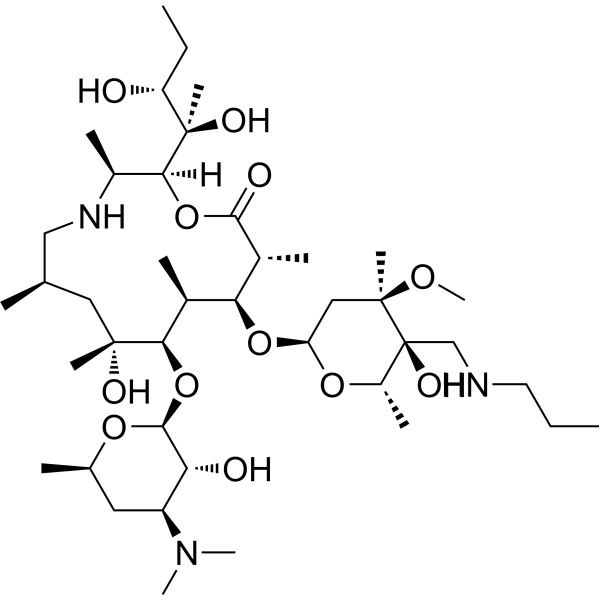
|
| DCAPI1490 | Anidulafungin Featured |
Anidulafungin
More description
|

|
| DC8113 | Carubicin Featured |
Carubicin is an anthracycline antineoplastic antibiotic isolated from the bacterium Actinomadura carminata.
More description
|
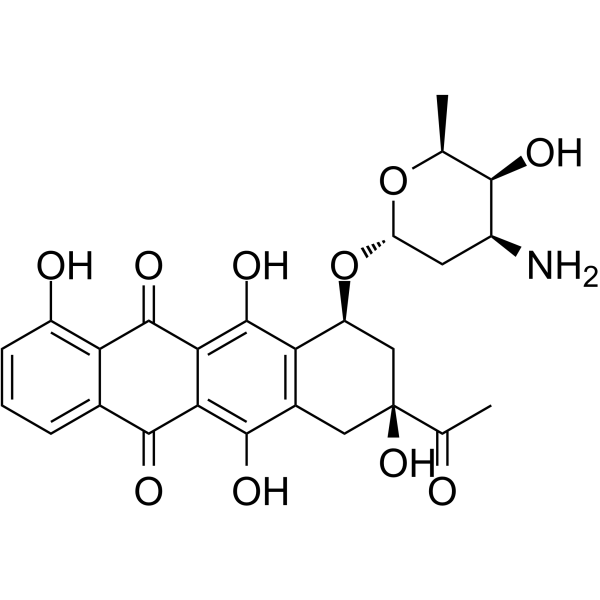
|
| DC21475 | PF-05105679 Featured |
PF-05105679 is a potent, selective TRPM8 channel inhibitor with IC50 of 103 nM (human TRPM8 currents inhibition).
More description
|
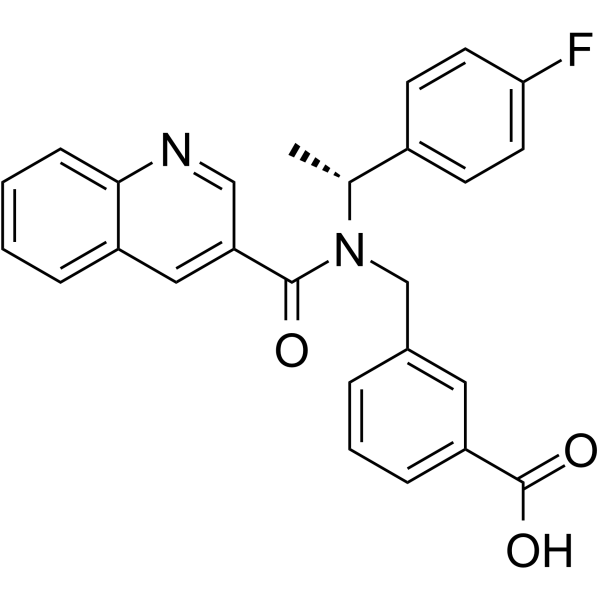
|
| DC28177 | Dazoxiben hydrochloride Featured |
Dazoxiben hydrochloride is a potent and orally active thromboxane (TX) synthase inhibitor.
More description
|

|
| DC20981 | Brequinar sodium Featured |
Brequinar sodium (DuP-785, Brequinar, NSC 368390) is a potent and selective inhibitor of DHODH with IC50 of 20 nM, triggers differentiation in the ER-HoxA9, U937, and THP1 cells with an ED50 of 1 uM.
More description
|
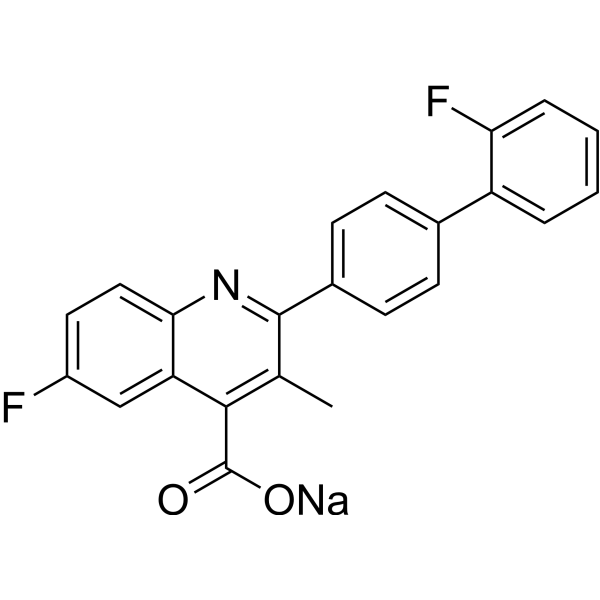
|
| DC9236 | Brequinar Featured |
Brequinar (DUP785) is a potent inhibitor of dihydroorotate dehydrogenase (DHODH) with an IC50 of 5.2 nM for human DHODH. Brequinar has potent activities against a broad spectrum of viruses. Brequinar also has an anti-SARS2 activity.
More description
|

|
| DC8804 | APD597(JNJ-38431055) Featured |
APD597(JNJ-38431055) is a GPR119 agonist intended for the treatment of type 2 diabetes, with EC50 of 46 nM for hGPR119.
More description
|
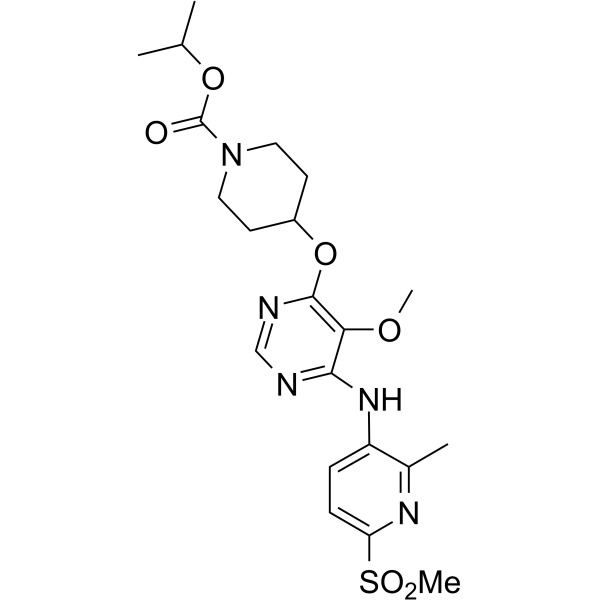
|
| DC42847 | Propargylcholine bromide Featured |
Propargylcholine bromide is a choline analogue containing terminal propargyl that can be incorporated into all classes of Choline-containing phospholipids such as phosphatidylcholine and sphingomyelin, labeling Choline-containing phospholipids. Propargylcholine bromide-labeled phospholipid molecules can be visualized in cells with high sensitivity and spatial resolution.
More description
|
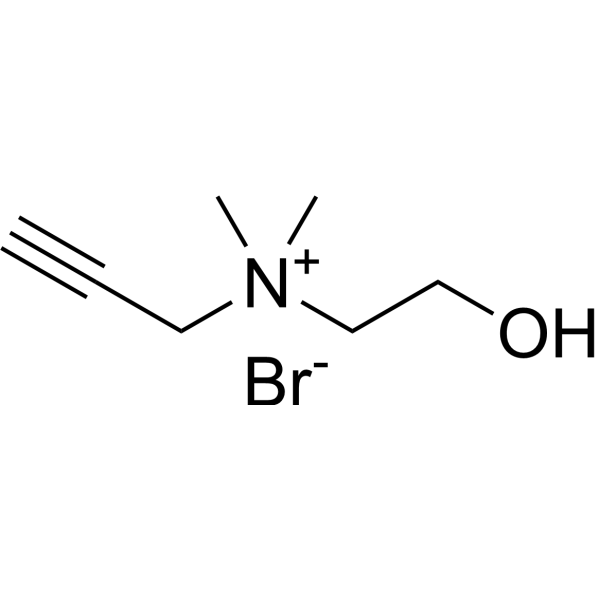
|
| DC9539 | Sobetirome Featured |
Sobetirome(GC-1; QRX-431) is a member of a class of compounds known as selective thyromimetics.
More description
|
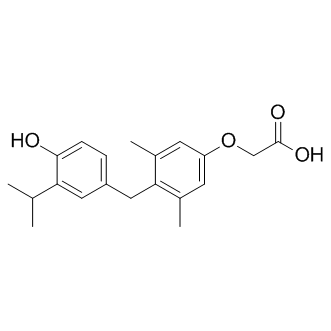
|
| DC31248 | Indibulin Featured |
Indibulin is a synthetic small molecule with antimitotic and potential antineoplastic activities. Indibulin binds to a site on tubulin that is different from taxane- or Vinca alkaloid-binding sites, destabilizing tubulin polymerization and inducing tumor cell cycle arrest and apoptosis. This agent has been shown to be active against multidrug-resistant (MDR) and taxane- resistant tumor cell lines. Check for active clinical trials or closed clinical trials using this agent. (NCI Thesaurus).
More description
|
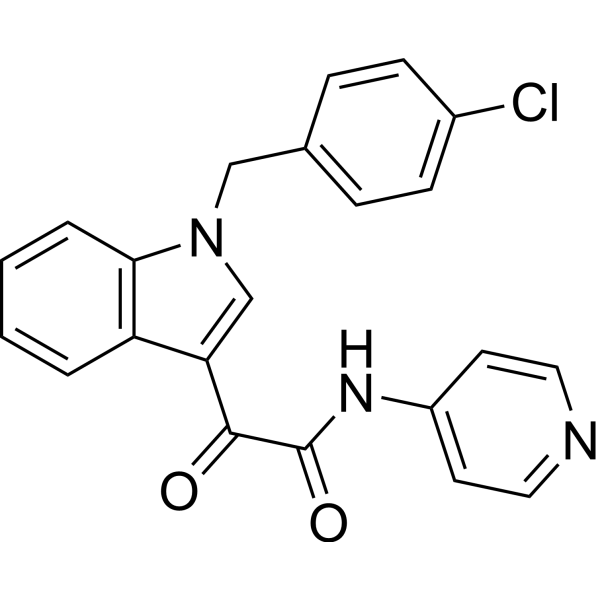
|
| DC11524 | Mavacamten(MYK-461) Featured |
Mavacamten(MYK-461)is a small molecule that reduces contractility by decreasing the ATPase activity of the cardiac myosin heavy chain.
More description
|

|
| DC27008 | Desciclovir Featured |
Desciclovir is a potent and orally active proagent of the antiherpetic agent Acyclovir (ACV). Desciclovir is converted to acyclovir in vivo by xanthine oxidase.
More description
|
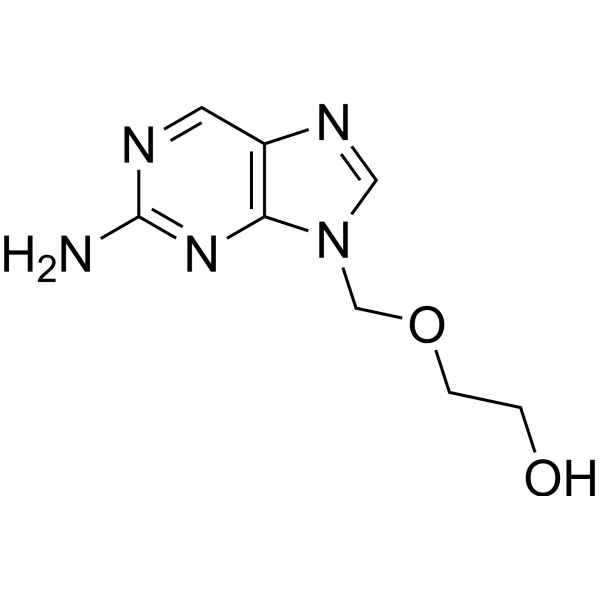
|
| DC50026 | GSK-114 Featured |
GSK-114 is a potent and selective selective TNNI3K inhibitor (TNNI3 IC50 = 25nM; B-RafV600E IC50 = 1000 nM). GSK-114 displays significant bias (40-fold) for TNNI3K over B-Raf, exceptional broad spectrum kinase selectivity, and adequate oral exposure to en
More description
|
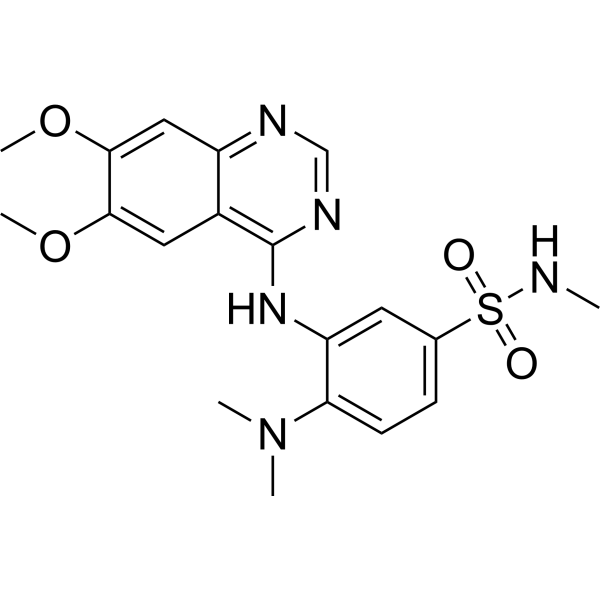
|
| DC22313 | PS48 Featured |
PS48 is a PDK1 (phosphoinositide-dependent protein kinase 1) activator which binds to the HM/PIF binding pocket rather than the ATP-binding site.
More description
|
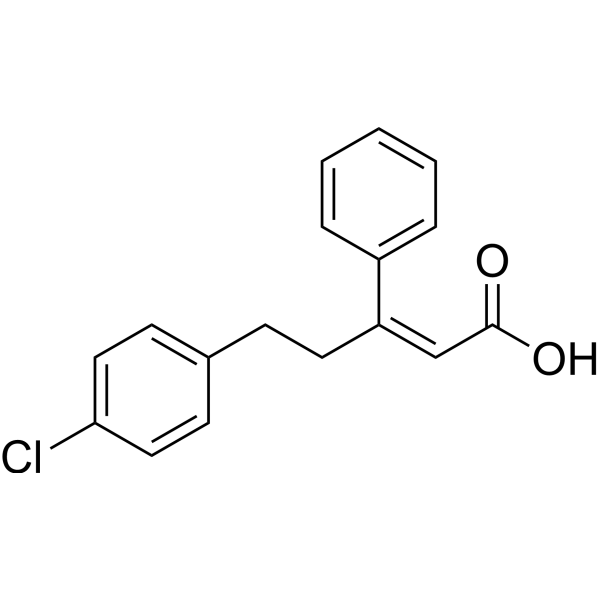
|
| DC28204 | SNAP 94847 hydrochloride Featured |
SNAP 94847 hydrochloride is a novel, high affinity selective melanin-concentrating hormonereceptor1 (MCHR1) antagonist with (Ki= 2.2 nM, Kd=530 pM), it displays >80-fold and >500-fold selectivity over MCHα1A and MCHD2 receptors respectively. SNAP 94847 hydrochloride binds with high affinity to the mouse and rat MCHR1 with minimal cross-reactivity to other GPCR, ion channels, enzymes, and transporters.
More description
|

|
| DC26037 | FDL-169 Featured |
FDL-169 is a novel and potent CFTR (Cystic fibrosis transmembrane conductance regulator) corrector being developed by Flatley Discovery Lab for treating cystic fibrosis (CF) patients who carry the F508del mutation
More description
|
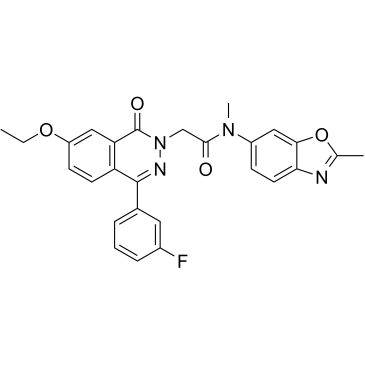
|